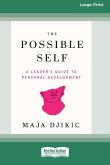Emotional Tornados in Your Workplace Can Be Just as Destructive as the Natural Kind If your company employs human beings, there are emotions at work. Emotions are part your company's culture and need to be as astutely managed as any other potential disruption to your business. The old paradigm of separating humans from humanity during work hours is not only antiquated thinking, it's high risk behavior. Emotional management should not be the sole domain of a few employees. Everyone can be awake and aware of the concepts and tools in this new book to effectively manage and channel workplace emotions. Of course, just as there are gamblers in "tornado alley" who ignore the warning sirens, you get to decide how much risk your company can absorb. Dr. Vali Hawkins-Mitchell, a leading authority in the growing field of Emotional Continuity Management, makes a compelling business case that the human emotion factor has a calculable, direct impact on the fiscal bottom line. She describes an event involving two rowdy employees who became violent over a work-related decision and how its effects led to her provocative new insights into the cost of mismanaged emotions in the workplace: Walking the halls, I saw, felt, and heard the disruptive effect of these two workers on 600 people. It was like experiencing the rubble of any other disaster. There was no physical wreckage, but the full range of emotions was exactly like that of any natural disaster. Everything was exposed and raw as if a common energy had stripped away the veneer of civilized behaviors. No infrastructure kept people safe in the presence of these out of control employees. People took sides, hid, ran, quit, overworked, underworked, ate too much, drank more, complained more, went silent, changed jobs, exited. They reacted as if all their system had been tossed into the air and was never going to land again. From that experience, I became sensitized to the differences between small gusts of emotions with no power and those with catastrophic force. Small variations in behavior can be early warning signs of trouble. "Dr. Vali" explains her own "Emotional Tornado V Chart" based on the Fujita scale, a method to observe, predict, prepare, plan, and write policy to manage workplace the full range of workplace emotions. She details how to control the employee "spinning" after emotionally-charged events, such as the effects of an abusive manager, layoffs, employee illnesses or stressful family situations, suicides, and headlined homicides. She gives special emphasis to managing office bullies and workplace emotions before, during and after an emergency or disaster. Dr. Vali offers these critical steps to all levels of management: Understand that emotions are going to happen, have measurable costs, can be managed in a compassionate manner that supports people and the bottom line, and don't go away just because they are suppressed, ignored, or devalued. In fact, they will distort and become even more lethal. Achieve realistic buy-in at the top - the CEO, owner, senior leadership - and briefly teach them key tools. With such awareness in place, emotions rising in the system can be reflected back into it in a healthy form with tools that increase loyalty and productivity. Managers will know that if a "tornado" breaks out, supports are already in place. Teach everyone, from the bottom up, tools to manage emotions.The primary key to emotional continuity management is that everyone is on the same team using the exact same tools, creating comradeship as well as intelligent procedures and policies.
Hinweis: Dieser Artikel kann nur an eine deutsche Lieferadresse ausgeliefert werden.
Hinweis: Dieser Artikel kann nur an eine deutsche Lieferadresse ausgeliefert werden.








